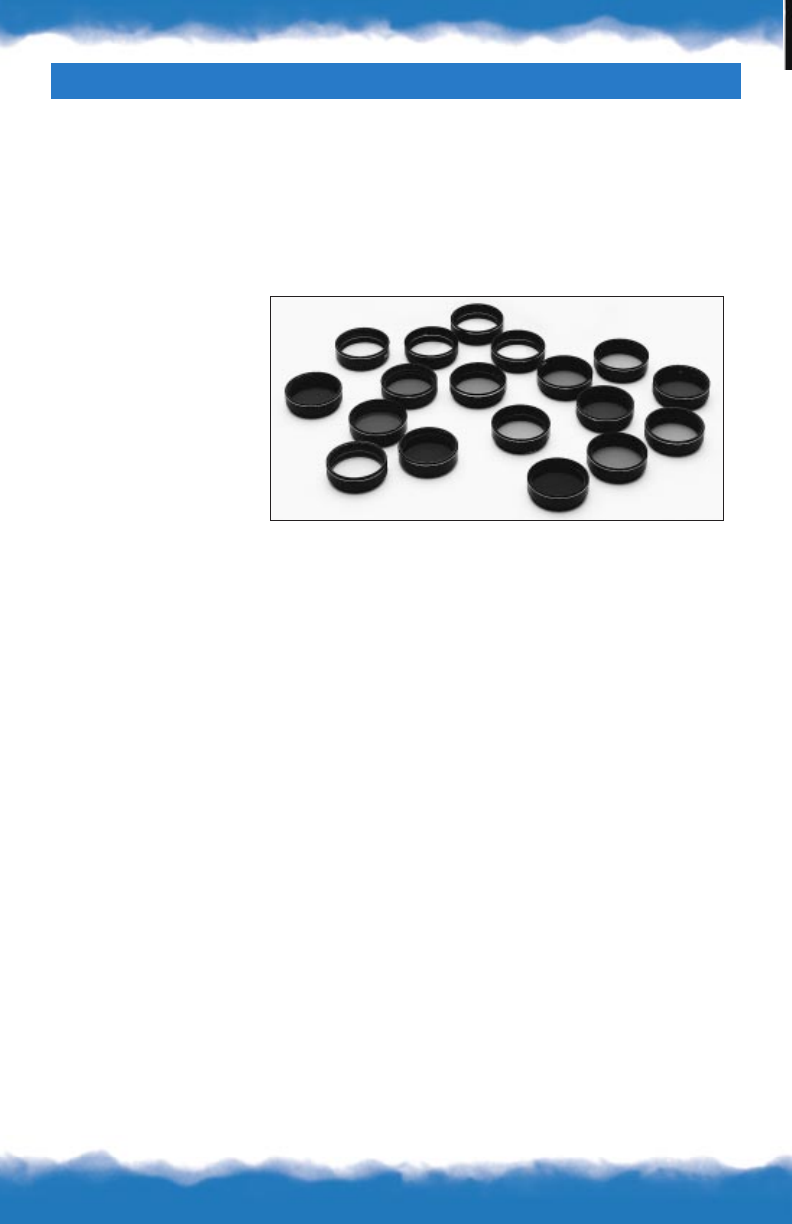
14
Eyepiece filters are an invaluable aid in lunar and planetary observing. They
reduce glare and light scattering, increase contrast through selective filtration,
increase definition and resolution, reduce irradiation and lessen eye fatigue.
Celestron’s filters are made of high quality, solid plane parallel glass with excel-
lent homogeneity. They’re anti-reflection coated to prevent glaring and ghosting.
All eyepiece filters are threaded to fit Celestron’s, and most other manufacturer’s,
1
1
/
4
" eyepieces, and offer a full 26mm clear aperture.
Celestron filters are mounted in black anodized aluminum cells with the Kodak
Wratten Series Number individually engraved, and come with a plastic case for
safe storage. The cells
of each filter are
double-threaded, so
they can be stacked
(piggybacked) in
various combinations.
This allows you to
create different color
combinations and
transmission charac-
teristics, or to have
the same color
characteristic, but
with a lower transmis-
sion. When stacking color filters, the effective transmission of the combination
you create is equal to the product of the spectral transmission of each of the
filters used.
The effectiveness of the filters depends on several factors, including: the aperture
and focal length of the telescope, the magnification being used, and seeing
conditions.
Following, you’ll find descriptions of all of Celestron’s eyepiece filters and what
you can expect from them in different viewing situations. Some of these filters
are available individually, and others are available in convenient four filter sets
Celestron has put together to affordably expand your range of observing options.
You’ll find the information on these filters arranged in the following color cate-
gories: Yellow, Orange, Red, Blue, Green and Violet. In each category, the informa-
tion that applies to all of the filters within that color group is listed, then specific
information for each filter is broken out into a separate category, where applicable.
This way, you’ll know what to expect from each of Celestron’s color filters. At the
same time, you’ll become familiar with the astounding variety of enhancements
available through these simple accessories.
YELLOW
#12 Deep Yellow 74% T [#94118-03 & Series 2]
#15 Deep Yellow 67% T [Series 4]
Moon – Enhance lunar features. Jupiter – Penetrate and darken atmospheric currents containing
low-hue blue tones. Enhance orange and red features of the belts and zones. Useful for studies of
the polar regions. Mars – Reduce light from the blue and green areas which darken the maria, oases
and canal markings, while lightening the orange-hued desert regions. Also sharpen the boundaries
of yellow dust clouds. Neptune – Improve detail in larger telescopes (11" and larger apertures).
Saturn – Penetrate and darken atmospheric currents containing low-hue blue tones. Enhance
orange and red features of the belts and zones. Uranus – Improve detail in larger telescopes (11" and
larger apertures). Venus – Reveal low-contrast surface features. Comets – Enhance definition in
comet tails.
FILTERS


















